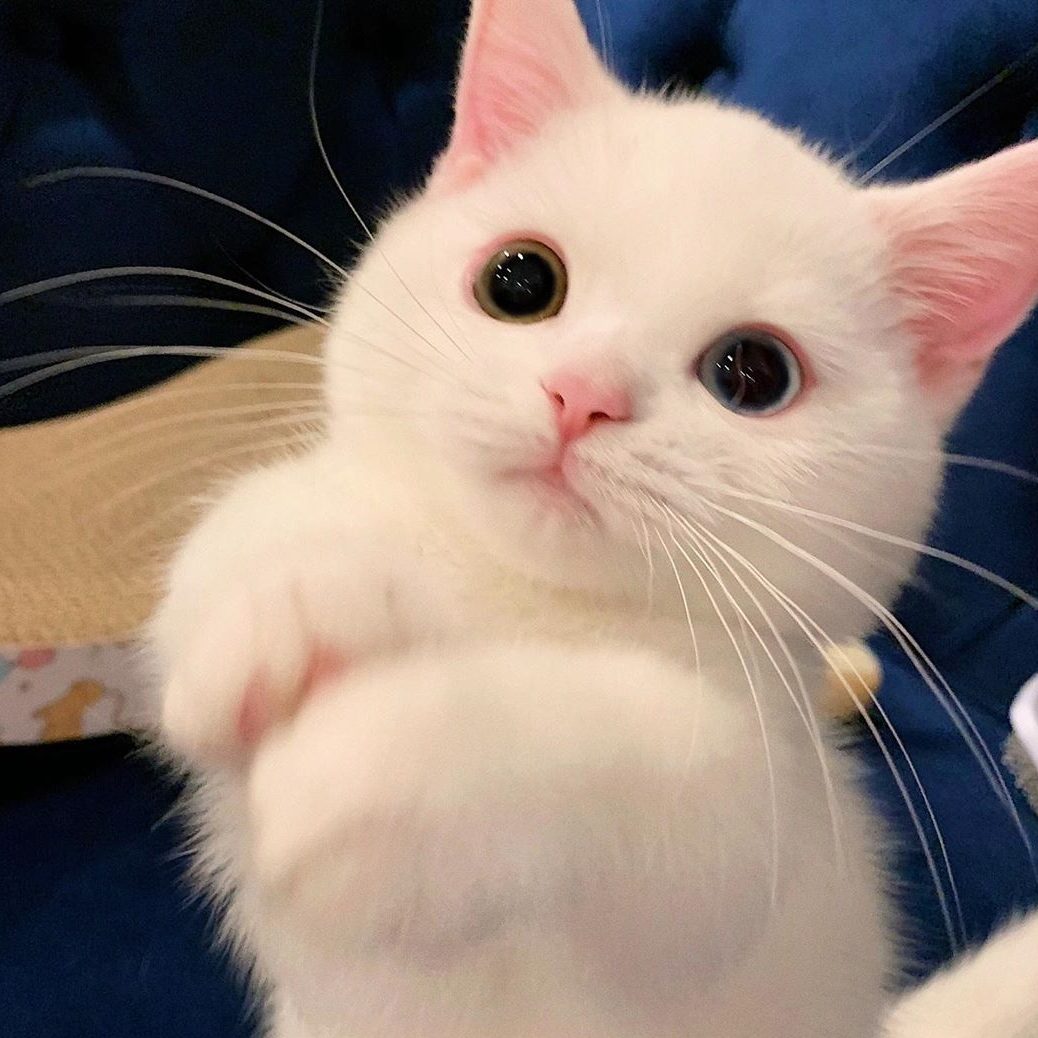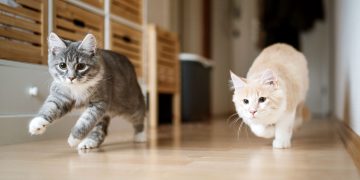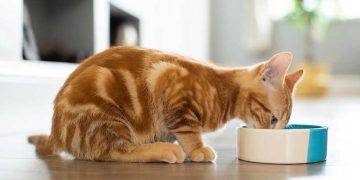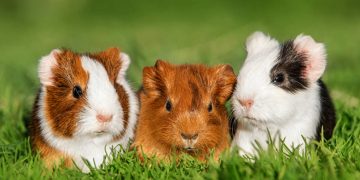Manx cats are a unique and fascinating breed, renowned for their distinctive appearance and charming personalities. Characterized by their taillessness or short tails, the Manx cat is a beloved breed among cat enthusiasts for its friendly demeanor, intelligence, and adaptability. However, their physical traits and specific care needs require a deeper understanding to ensure these cats thrive in your home.
In this comprehensive guide, we will explore everything you need to know about Manx cats—from their history and physical characteristics to their temperament, health care, grooming needs, and training. By understanding these aspects, you can provide the best care possible for your Manx cat and enjoy a fulfilling, long-lasting relationship with your feline friend.
1. What is a Manx Cat? A Brief Introduction
The Manx cat is a distinct and ancient breed, believed to have originated on the Isle of Man, a small island located between England and Ireland. The breed is best known for its taillessness or short tail, although not all Manx cats are tailless. This unique trait is a result of a natural genetic mutation that affects the spinal cord.
1.1. Origin of the Manx Cat
The history of the Manx cat is shrouded in mystery and legend. Some theories suggest that the breed’s taillessness is due to a mutation that occurred on the Isle of Man, while others believe it was brought to the island by seafarers. In either case, the Manx cat became a distinctive part of the island’s culture and was cherished for its charming personality and unique appearance.
1.2. Key Features of the Manx Cat
- Tail Variations: The most prominent feature of the Manx cat is its tail (or lack thereof). Manx cats can have different tail lengths, ranging from completely tailless (called a “rumpy”) to a short stub (called a “stumpy”) or even a full-length tail (called a “longy”).
- Body Structure: Manx cats are medium to large-sized cats with a round, muscular body, short hind legs, and a rounded head. Their deep, broad chest and powerful legs allow them to move swiftly and with great agility.
- Coat and Colors: Manx cats come in a variety of coat colors and patterns, including solid, tabby, bicolor, and tortoiseshell. Their coats are typically dense and plush, with a soft, velvety texture.
2. What Are the Personality Traits of Manx Cats?
Manx cats are known for their friendly, playful, and intelligent nature. They are not just beloved for their appearance but also for their wonderful personalities, which make them great companions for families and individuals alike.
2.1. Sociability and Affection
- Family-Friendly: Manx cats are known to get along well with children and other pets, making them an excellent choice for families. They are generally tolerant and affectionate, but they can sometimes be reserved, especially around strangers.
- Affectionate Nature: While they are not as clingy as some other breeds, Manx cats tend to form strong bonds with their owners. They enjoy sitting on their laps and being petted but are not overly demanding for attention.
- Adaptable: These cats adapt well to different environments. Whether you live in a busy household or a quiet apartment, a Manx cat can adjust to your lifestyle, provided they receive enough mental stimulation and affection.
2.2. Intelligence and Playfulness
- Quick Learners: Manx cats are highly intelligent and curious, often learning new tricks and commands quickly. They enjoy problem-solving activities, so puzzle feeders and interactive toys can keep them entertained for hours.
- Playful but Independent: Manx cats enjoy playtime, but they are also independent and will entertain themselves when they feel like it. They are often content to play on their own, but they also love engaging in interactive play with their owners.
2.3. Quiet and Calm
- Not Very Vocal: While Manx cats are affectionate, they are typically not overly vocal. They may communicate with soft chirps or meows but tend to be more reserved in their vocalizations compared to some other breeds.
- Calm and Laid-Back: Manx cats are generally calm and laid-back. They enjoy lounging around the house but are also capable of bursts of energy and excitement when it’s time for play.
3. What Are the Physical Characteristics of Manx Cats?
Manx cats are easy to identify due to their unique physical features. Their distinctive appearance sets them apart from other cat breeds, but it also requires specific care to maintain their health and comfort.
3.1. Tail Variations and Genetic Considerations
- Rumpy: A Manx cat with no tail at all is referred to as a “rumpy.” This taillessness is a genetic mutation that affects the spine and tail vertebrae, causing the tail to be absent or very short.
- Stumpy: A “stumpy” Manx cat has a short tail, usually only a few inches long. This type of tail variation is less common than the rumpy but still considered a defining feature of the breed.
- Longy: Some Manx cats are born with a fully developed tail, known as a “longy.” These cats still exhibit many of the breed’s other physical traits, such as the rounded body and short hind legs.
3.2. Body Structure and Size
Manx cats have a medium to large body size, with muscular and compact physiques. They are characterized by:
- Short Hind Legs: One of the breed’s most unique features is its short hind legs, which give the cat a distinctive, somewhat “hopped” gait.
- Rounded Appearance: The Manx cat’s body has a round and robust shape, with a broad chest and large, expressive eyes.
- Weight: Manx cats typically weigh between 8 and 12 pounds, with males being slightly larger than females.
3.3. Coat and Grooming
Manx cats have a dense and plush coat that can come in various lengths. Their coat types include:
- Short Coat: Some Manx cats have short, sleek coats that require minimal grooming. However, they still benefit from regular brushing to remove loose hair and prevent matting.
- Long Coat: Other Manx cats have longer, silkier fur that requires more attention. These cats benefit from frequent grooming to prevent tangling and mats.

4. How to Care for a Manx Cat
Proper care and attention are crucial for ensuring that your Manx cat lives a long, healthy, and happy life. From grooming to diet and exercise, here’s how to care for your Manx cat:
4.1. Grooming Needs
- Brushing: Manx cats with short coats generally require minimal brushing, but long-haired Manx cats need more regular grooming. Brush their coat at least twice a week to prevent mats and tangles.
- Bathing: While not necessary for most Manx cats, some owners may choose to bathe their cats occasionally, especially if they have a longer coat. Use a cat-specific shampoo and ensure your cat is thoroughly dried after the bath.
- Nail Clipping: Regular nail trimming is important to keep your Manx cat’s claws in check. Be sure to use proper cat nail clippers and avoid cutting too close to the quick.
4.2. Diet and Nutrition
- High-Quality Cat Food: Provide your Manx cat with high-quality, well-balanced cat food that includes protein, fat, and essential nutrients. Look for foods that contain real meat as the primary ingredient.
- Portion Control: Like all cats, Manx cats can gain weight if overfed. Stick to a consistent feeding schedule and avoid free-feeding to prevent obesity.
- Hydration: Ensure that your cat always has access to fresh water. Wet food can also help with hydration, especially for cats that tend not to drink enough water.
4.3. Health and Veterinary Care
- Regular Vet Check-Ups: Take your Manx cat to the vet for regular check-ups to monitor their health and catch any potential issues early. Annual vaccinations and parasite prevention are essential.
- Manx Syndrome: Some Manx cats may be prone to a condition known as Manx Syndrome, which is a spinal disorder associated with the breed’s taillessness. Symptoms can range from mild to severe and may include difficulty walking or bladder problems. Regular vet visits and early diagnosis are key to managing this condition.
5. Common Health Concerns for Manx Cats
While Manx cats are generally healthy, they are susceptible to certain breed-specific health issues. Knowing what to look out for can help you provide the best care for your cat.
5.1. Manx Syndrome
Manx Syndrome is a congenital condition that affects some Manx cats due to the genetic mutation responsible for their taillessness. This syndrome can cause a variety of spinal and neurological problems, including:
- Spinal Deformities: Some Manx cats may experience abnormal spinal development, which can lead to problems with walking and coordination.
- Bladder and Bowel Issues: In more severe cases, Manx Syndrome can cause difficulties with bladder and bowel control, resulting in incontinence.
5.2. Hip Dysplasia
Manx cats are also at a higher risk for hip dysplasia, a condition in which the hip joint doesn’t develop properly. This can lead to arthritis and mobility issues. Regular vet check-ups and a healthy weight are important for managing this condition.
6. Conclusion: The Joy of Owning a Manx Cat
Manx cats make wonderful companions thanks to their affectionate nature, intelligence, and unique physical traits. They are generally healthy, but their distinct characteristics—such as their taillessness and short hind legs—require special attention to ensure they thrive.
By understanding their temperament, grooming needs, diet, and potential health issues, you can provide a safe and nurturing environment for your Manx cat. With proper care, your Manx cat will reward you with years of love, companionship, and delightful antics.























































